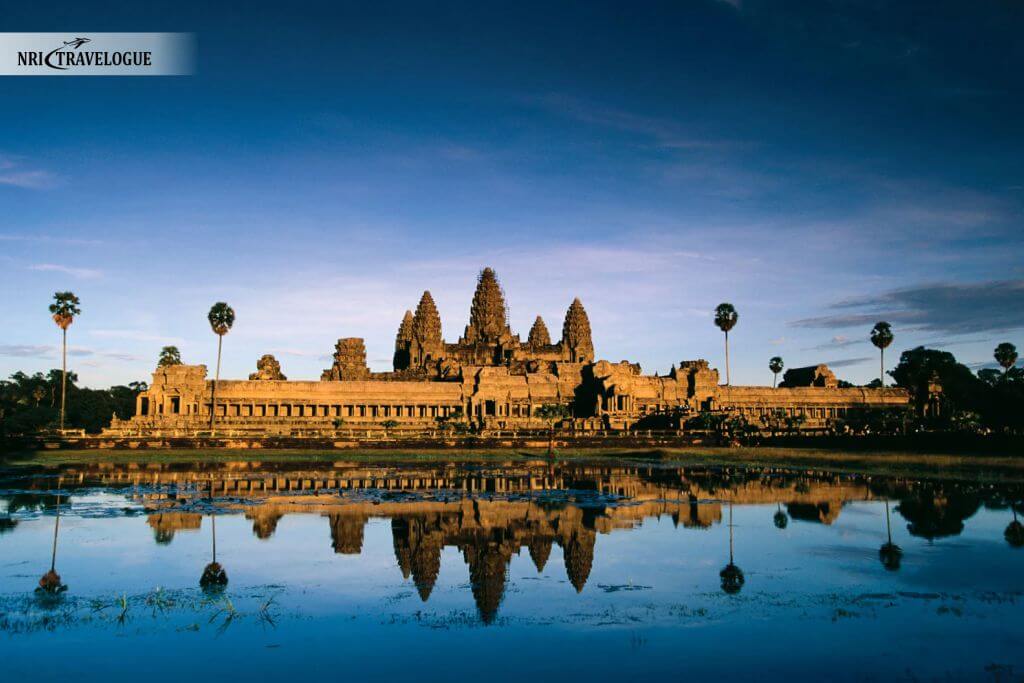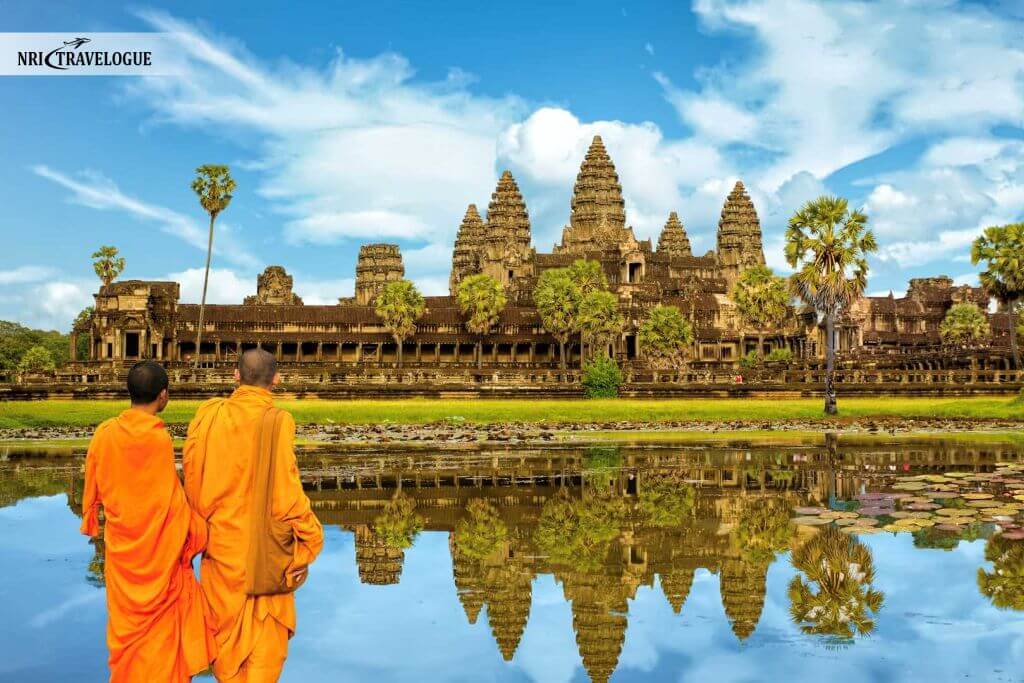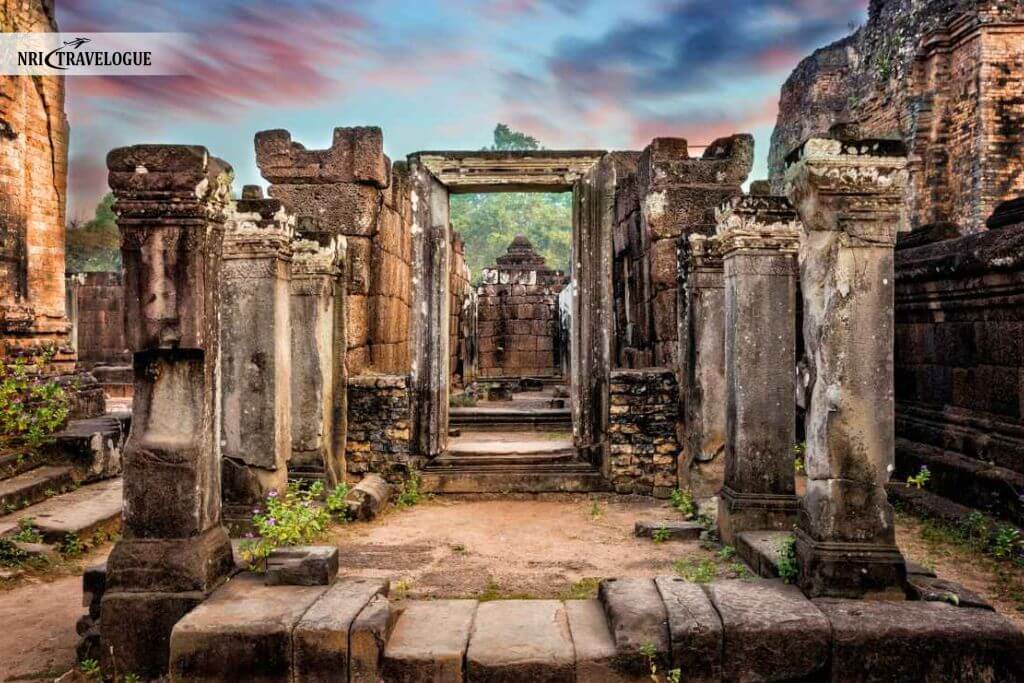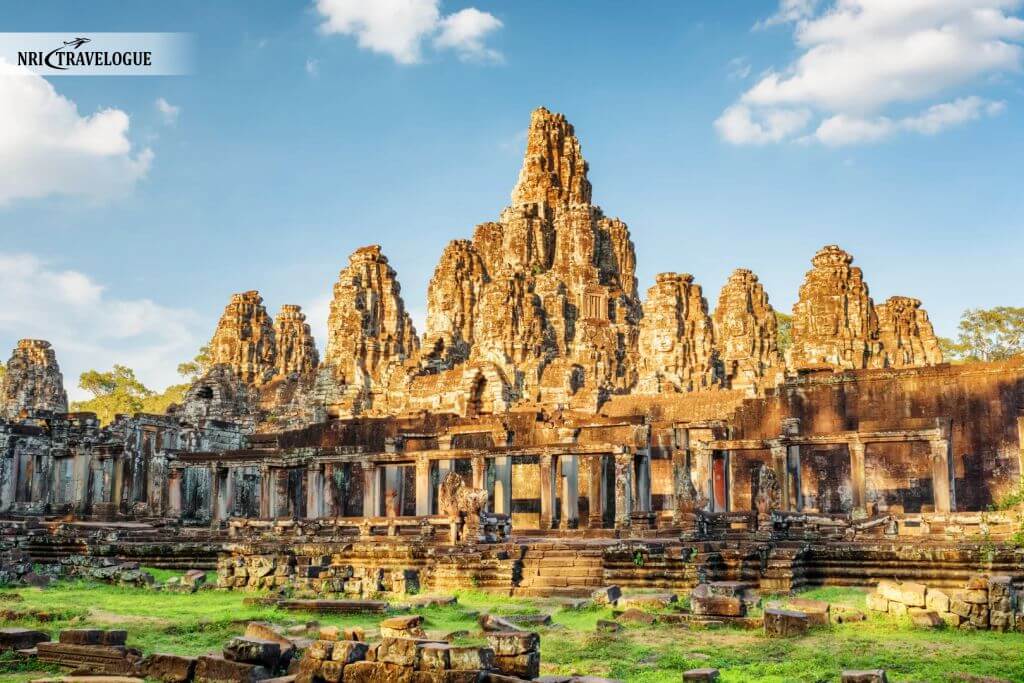Few places in the world actually carry the same sense of wonder as Angkor Wat. Located in Cambodia the ancient temple complexes have become a symbol of resilience, culture, and human creativity. For a lot of travelers, it’s not just a destination but a dream. Even if you have seen hundreds of photographs, the first glimpse of the towering Spires rising above the jungle leaves you in awe.
In 2025, Angkor Wat actually continue to attract millions of visitors each year. Yet it is not only about temples and ruins, it is all about history, people and tradition, and the unique Cambodian spirit that surrounds the complex. In this guide, you can learn everything about Angkor Wat.
A short history of Angkor Wat Temple
Firstly, you need to know that Angkor Wat is not just about the largest religious monument in the world; it is all about the heart of Cambodian identity, appearing proudly on the national flag. Built in the early 12th century by King Suryavarman 2, it later became a Buddhist temple reflecting the cultural shifts of Cambodia. The design is a stunning example of Khmer Architecture, towers shaped like Lotus buds, delicate carvings of Hindu epics, and vast courtyards highlighting extraordinary craftsmanship.

You must know that Angkor Wat was built to represent Mount Meru, the mythical home of the gods in Hindu cosmology. The central tower symbolizes the peak of the mountain, all surrounding walls and moats symbolize oceans. Although never fully abandoned, the site was largely forgotten by the outside world until French explorers brought it to international attention back in the 19th century. Today, Angkor Wat is both a UNESCO World Heritage site and a living spiritual place where monks even today continue to pray, and visitors often find moments of quiet reflection.
Why visit the Angkor Wat Hindu Temple in 2025?
There are many reasons why Angkor Wat remains one of the most desired travel destinations. It’s a living reminder of the Khmer empire’s glory, a civilization that dominated Southeast Asia for centuries. Despite the crowd’s Angkor Wat as a calming sacred energy that draws visitors back.

By 2025, the infrastructure of Cambodia will have improved, making it easier than ever to reach Angkor Wat from major ancient cities. Beyond the temple walls, the nearby town of Siemp Reap offers market performance and traditional cuisine. You can see that Angkor Wat in 2025 is not just about looking back at history but also about understanding how Cambodia preserves its heritage while welcoming modern travellers.
Travel routes to Angkor Wat in 2025
Angkor Wat is located near Siem Reap, a vibrant town in northwestern Cambodia. You can just arrive here 1st and then head to the temple complex. Siem Reap International Airport opened back in 2023 and has expanded connections by 2025. Direct flights now arrive from major Asian hubs like Bangkok, Singapore Kuala Lumpur Hanoi and long haul flights from Europe. From the airport, the temple complexes are just about 40 minutes by taxi or tuk-tuk.

You can even arrive by Rd. from Phnom Penh the capital city that is around 320 kilometers away. Buses, minivans and private taxis connect the capital city to the temple complex in just five to six hours. Buses and shared taxis connect Bangkok to the city via the border crossing. The route is popular and also budget-friendly. You can even visit from Hoi Chi Minh city, Vietnam. It offers a mix of Cambodian countryside views along the way.
During certain seasons, travelers can take boats between Phnom Penh and Siem Reap. No doubt the journey is slow but very scenic.
Exploring the Angkor Wat archaeological park
Angkor Wat archaeological park covers around 400 square kilometers. Angkor Wat is the highlight but the complex includes hundreds of temples. Exploring requires planning here. The central jewel is Angkor Wat. Sunrise here is one of the most photographed moments in the world. The ancient capital city of the Khmer empire is Angkor Thom. Its famous Bayon temple is decorated with more than 200 stone faces. Ta Prohm is a temple where massive trees grow over stone walls, creating a scene that looks straight out of an adventure film.

You can purchase a pass valid for one day, three days or even 7 days. The longer passes are useful because exploring beyond Angkor Wat takes a lot of time and energy. Tickets are now available online, making it very easy for you to book online.
The best time to visit
Watching the sunrise behind Angkor Wat is unforgettable. You must arrive early to secure a good spot. The temple glows beautifully in the golden light. Sunset is his favorite, though it is likely to get crowded. The best months are November to February when the weather is cold and dry. March to May is really hot, while June to October is rainy but lush and green.

Local insights
Visiting Angkor Wat is not just about temples, the nearby town provides a window into Cambodian life. You can try traditional dishes like coconut fish Curry and fresh tropical fruits are truly a must try. Night markets serve both St. snacks and sit down things. You can visit the old market as it’s full of souvenirs and spices. Traditional apsara dance shows bring ancient mythology to life. A lot of cafes and craft shops are linked to local NGOs providing you an opportunity to support education and training in the community. Exploring Siem Reap alongside Angkor Wat creates a fuller, richer travel experience.
Practical tips for travelers in 2025
Truly remained the most popular way to move between temples. You can also go for bicycles or an E bike if you are looking for an eco-friendly experience. Temples are completely sacred sites so shoulders and knees should be covered out of respect. Hiring a local guide truly adds depth. They can help you explain the carvings and history that might otherwise be missed. You can use refillable water bottles, avoid touching carvings and respect all the preservation rules to protect the site for future generations. Angkor Wat is completely popular. Visiting less-known temples during peak hours offer quite an experience.
The daily rhythm of Angkor Wat
Before the sun rises the air is completely cool and quiet anticipation fills in the temple grounds. The first flight reflects on the Lotus concerning the towers into silhouettes. You can see a lot of travelers gathering but there is a rush as though everyone senses the sacredness of the moment.
The sun climbs high during midday and the stone heats up full service when the corridors feel alive with light and shadow. You can retreat to shaded areas while monks and orange robes move calmly through the temple. As the sun sets the golden glow softens the carvings. The crowds can thin and the temple feels more intimate. Following the natural rhythm creates a deeper connection turning a visit into an experience other than just a checklist.
Why does Angkor Wat touch the heart?
What makes Angkor Wat really special is not only the stone carvings or even giant towers, it’s the way the place feels alive. Monks blocking barefoot on ancient steps or children playing near temple gates, the smell of incense, the hum of cicadas in the heart all combined to create a deeply human experience. By 2025 tourism has grown but the soul of Angkor Wat remains. It continues to inspire or remind you of both the power of human imagination and the fragility of heritage.
Angkor Wats and sustainability
With millions visiting each year, predicting Angkor Wat is a global responsibility. Conservation 2025 is stronger than ever. Teams of archaeologists and locals carefully clean, repair and stabilize Temples without changing the original design. Many tour operators even provide refill stations, reusable water bottles and electric tuk tuks to reduce carbon footprints.
So in short you can say that Angkor Wat in 2025 truly remains one of the best journeys that you can take as a traveler. It’s a place where history, spirituality and humanity meet. From the quiet of dawn at the Lotus ponds to the vibrant life of the night markets, every moment adds a layer to the story. Visiting Angkor Wat is not only about looking at the ruins, it’s all about feeling the weight of centuries, hearing the whispers of myths, and also connecting with people who carry the heritage forward.
One day covers the highlights but at least three days is recommended to see Angkor Wat.
Yes many temples are completely easy to access and tuktuks make travelling between sites convenient. Some areas have steep stairs so extra care is needed.
Light breathable clothes that cover folders and needs are recommended. Comfortable walking shoes are very important as temporal grounds are large and uneven first up hats and sunscreen are also useful.







